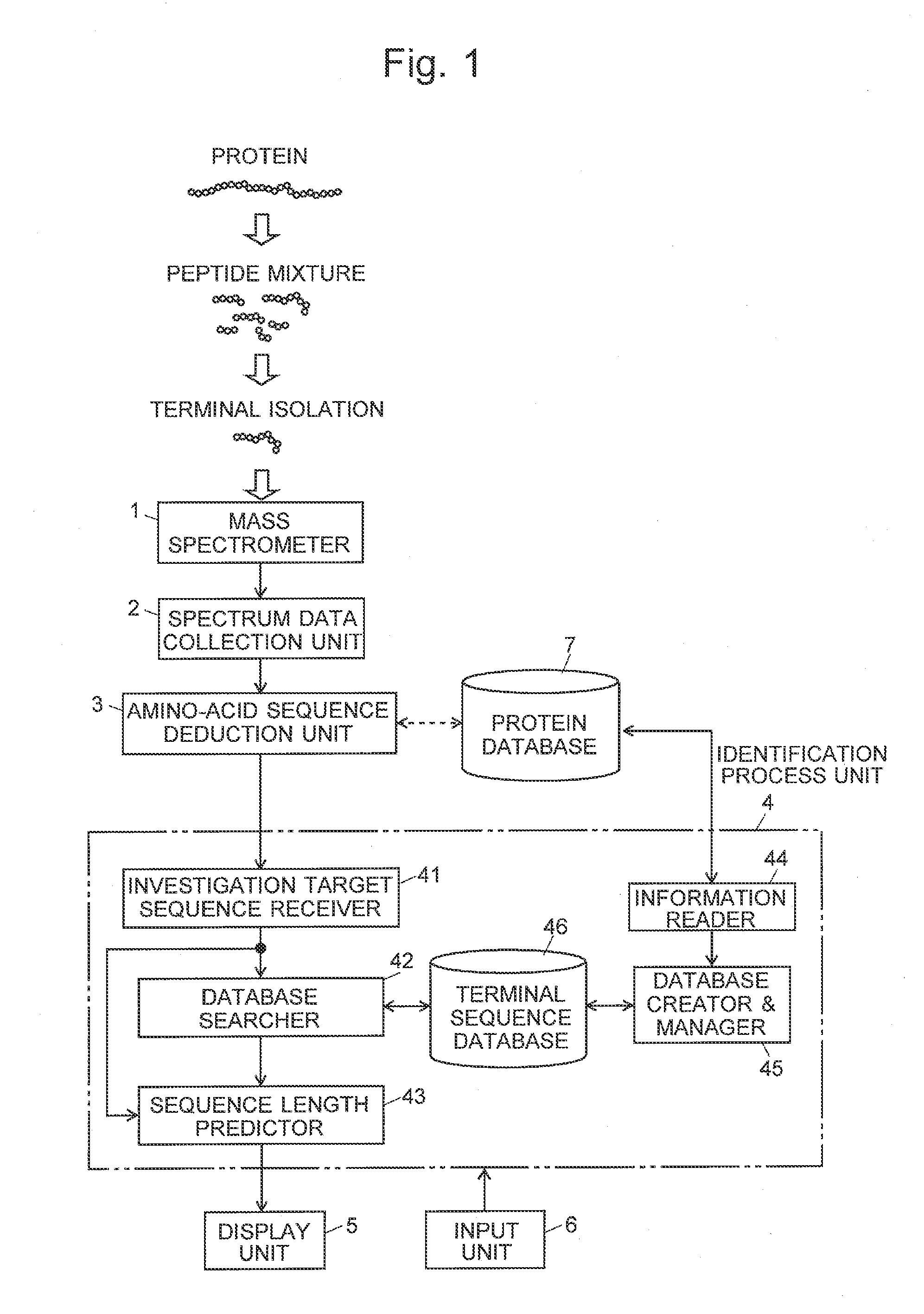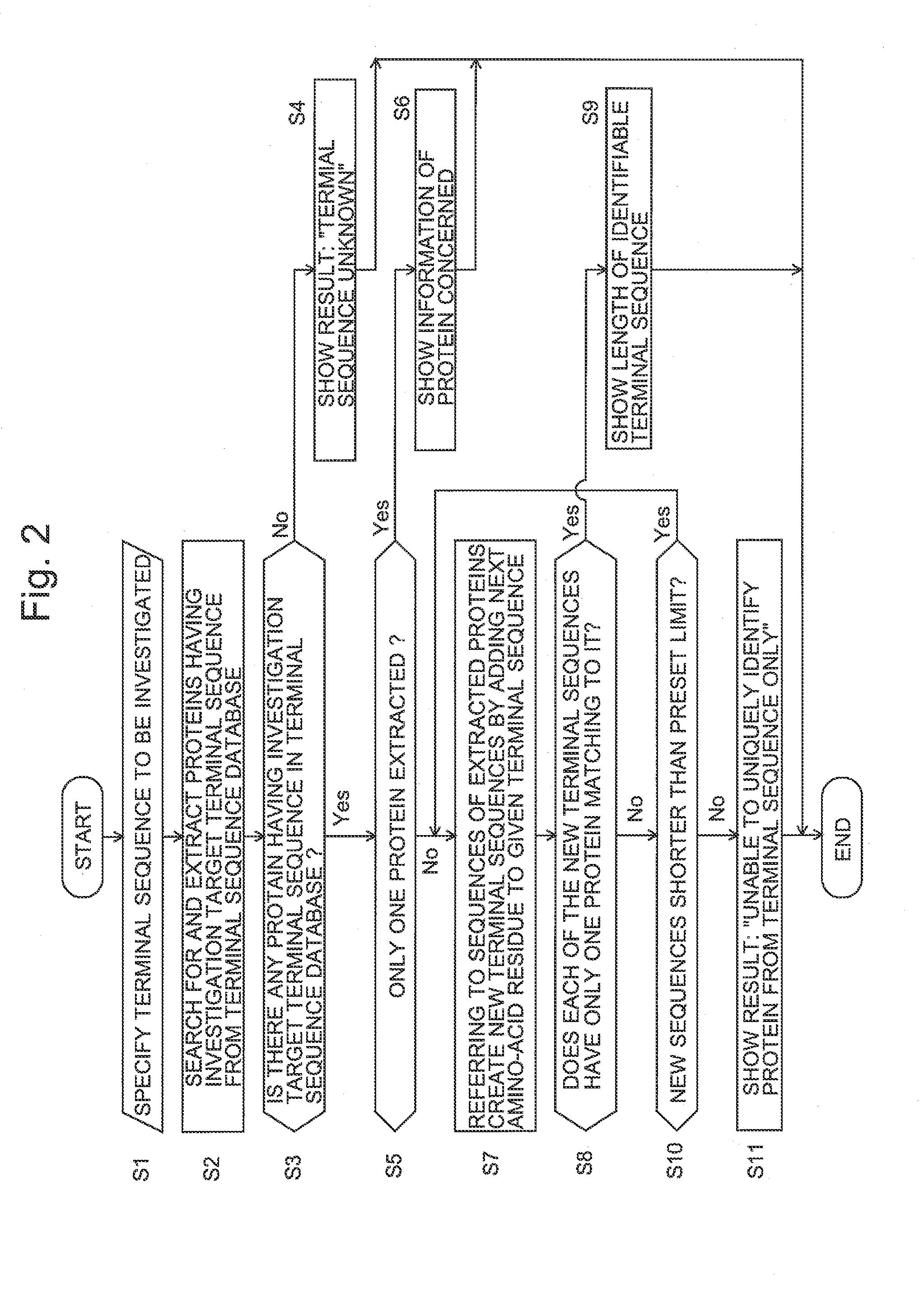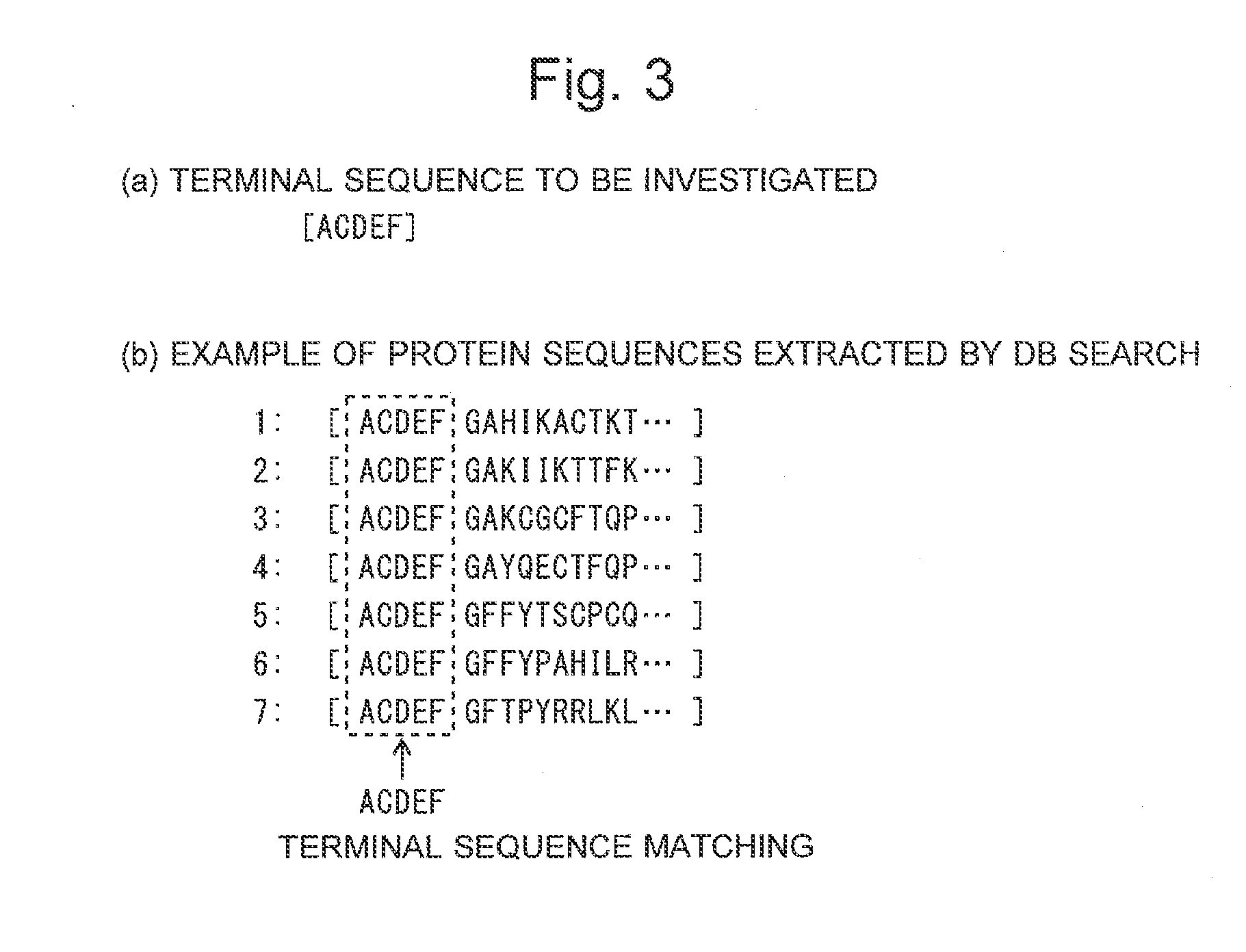Protein identification method and system
a protein identification and protein technology, applied in the field of protein identification methods and systems, can solve the problems of difficult analysis, inability to easily detect proteins, and inability to obtain useful information other than the fact that the protein cannot be identified by the analysis operator
- Summary
- Abstract
- Description
- Claims
- Application Information
AI Technical Summary
Benefits of technology
Problems solved by technology
Method used
Image
Examples
Embodiment Construction
[0044]One embodiment of the protein identification system for carrying out the protein identification method according to the present invention is hereinafter described with reference to the attached drawings. FIG. 1 is an overall configuration diagram of the protein identification system of the present embodiment, and FIG. 2 is a flowchart showing a procedure for identifying a protein in the present system.
[0045]The protein identification system of the present embodiment includes a mass spectrometer 1, a spectrum data collection unit 2, an amino-acid sequence deduction unit 3, a protein database 7, an identification process unit 4, a display unit 5 and an input unit 6. The identification process unit 4 is a characteristic element for carrying out the protein identification method according to the present invention. It includes an investigation terminal sequence receiver 41, a database searcher 42, a sequence length predictor 43, an information reader 44, a database creator and mana...
PUM
 Login to View More
Login to View More Abstract
Description
Claims
Application Information
 Login to View More
Login to View More - R&D
- Intellectual Property
- Life Sciences
- Materials
- Tech Scout
- Unparalleled Data Quality
- Higher Quality Content
- 60% Fewer Hallucinations
Browse by: Latest US Patents, China's latest patents, Technical Efficacy Thesaurus, Application Domain, Technology Topic, Popular Technical Reports.
© 2025 PatSnap. All rights reserved.Legal|Privacy policy|Modern Slavery Act Transparency Statement|Sitemap|About US| Contact US: help@patsnap.com



